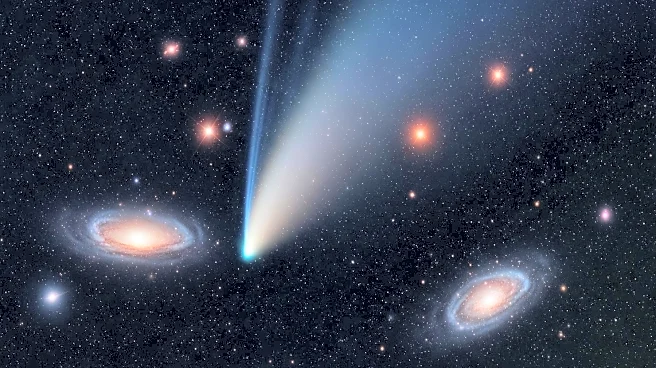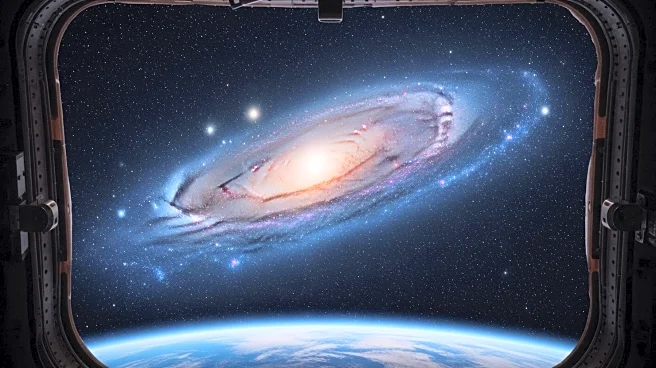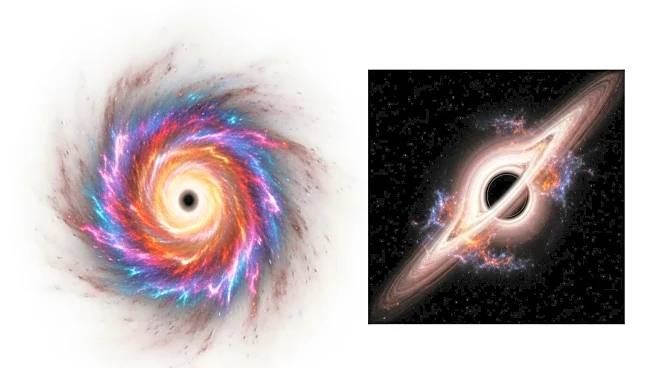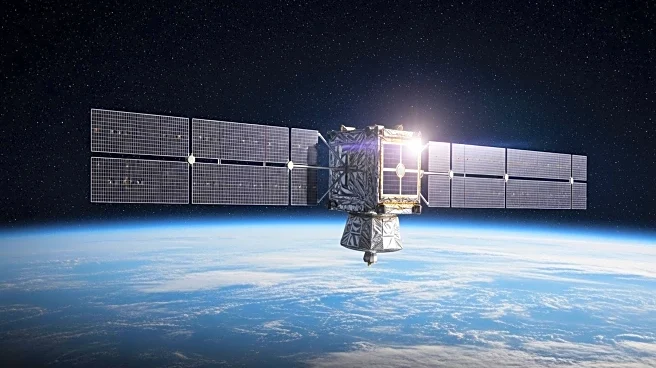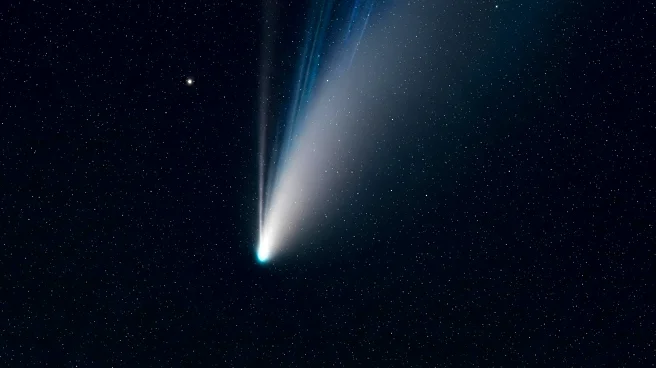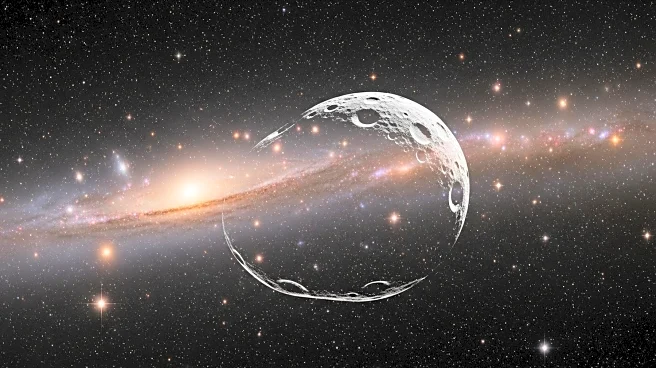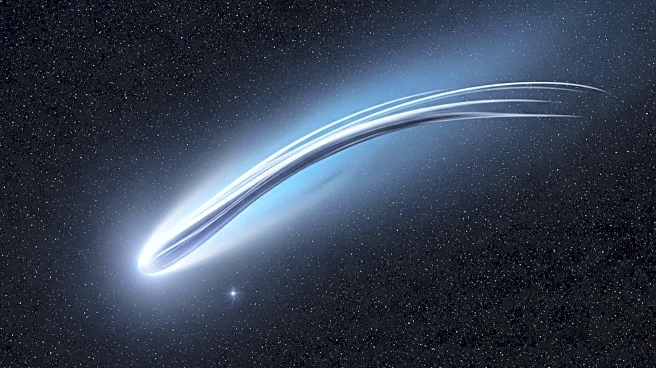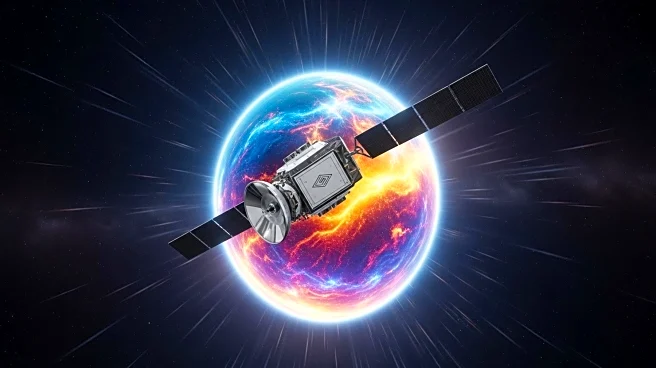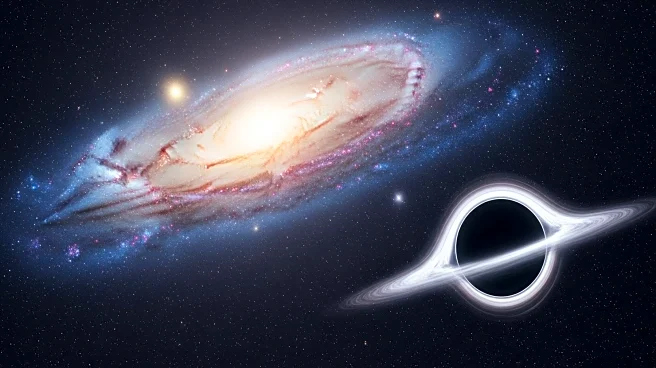What is the story about?
What's Happening?
NASA's Solar Dynamics Observatory has discovered a new comet, C/2025 R2 (SWAN), which is expected to be visible to the naked eye in mid-October. The comet was identified by Ukrainian amateur astronomer Vladimir Bezugly and classified by the International Astronomical Union's Minor Planet Center. SWAN R2, with a tail as long as five full moons, orbits the sun every 22,554 years. It will be closest to Earth on October 21, at 0.27 astronomical units away, potentially reaching a brightness of magnitude 4. This coincides with the approach of another comet, C/2025 A6 (Lemmon), discovered by the Mount Lemmon Survey in Arizona, which will be 0.60 AU from Earth. Both comets may be visible during the peak of the Orionid meteor shower, offering a unique skywatching opportunity.
Why It's Important?
The simultaneous visibility of two bright comets alongside a meteor shower presents a rare astronomical event that could captivate skywatchers and scientists alike. This occurrence provides an opportunity for educational outreach and public engagement in astronomy, potentially inspiring interest in space sciences. The visibility of these comets could also offer valuable data for astronomers studying cometary behavior and solar system dynamics. The event may boost tourism in areas with optimal viewing conditions, benefiting local economies.
What's Next?
As the comets approach their closest points to Earth, astronomers and enthusiasts will prepare for optimal viewing conditions. Observatories and amateur astronomers will likely focus on capturing images and data to analyze the comets' compositions and trajectories. Public interest may lead to organized viewing events, especially in regions with clear skies. The potential meteor shower could also attract attention, with predictions of up to 20 meteors per hour during the peak nights.
Beyond the Headlines
The discovery and observation of these comets highlight the importance of international collaboration in astronomy, as amateur astronomers play a crucial role in identifying celestial objects. This event underscores the dynamic nature of our solar system and the ongoing need for monitoring and research. It may also prompt discussions on the impact of celestial events on cultural and scientific perspectives.
AI Generated Content
Do you find this article useful?
